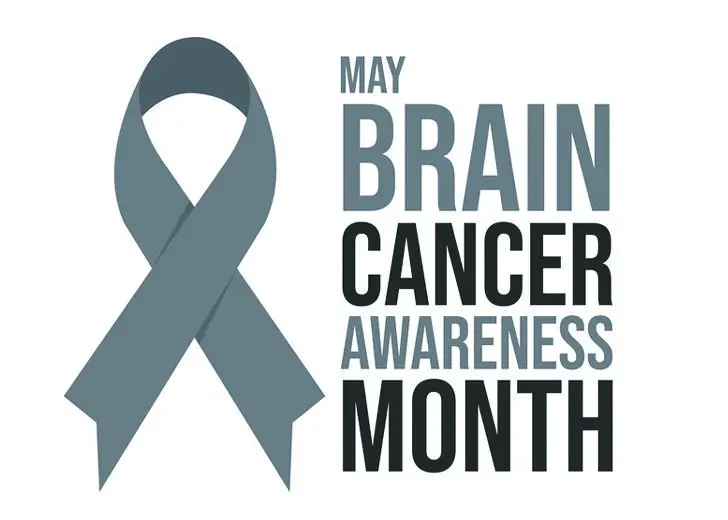
Brain Cancer Awareness Month | Biography
The first Congressional resolutions honoring Brain Tumor Awareness Month were enacted in 2008. Every year, the National Brain Tumor Society (NBTS) works with our volunteers and activists to reaffirm the appeals for public awareness of brain tumors and honor all those affected by this disease.
The month of May is marked as Brain Cancer Awareness Month across the United States.
What is Brain Cancer Awareness Month? When Does it Start?
May is Brain Tumor Awareness Month, also known as Brain Cancer Awareness Month. It is commended for promoting awareness and mobilizing support for several people across the United States living with benign brain tumors/brain cancer.
The month-long initiative, also dubbed "Gray May," attempts to bring awareness to the "gray area" between optimism and despair that many people face when coping with brain tumors. Researchers and advocates try to increase awareness and support during these important events in addition to Brain Tumor Awareness Month.
The first Congressional resolutions honoring May Brain Cancer Awareness Month were enacted in 2008. Every year, the National Brain Tumor Society (NBTS) works with our volunteers and activists to reaffirm the appeals for public awareness of brain tumors and honor all those affected by this disease.
Pediatric Brain Tumor Foundation (PBTF)
A brain tumor is the deadliest pediatric cancer and the most commonly detected cancer in children and young adults. It affects more than 28,000 children in the United States.
Unfortunately, far too many children are currently without a chance of being given the opportunity. Those who survive must contend with the persistent fear of recurrence and long-term physical, intellectual, and psychological consequences.
The Pediatric Brain Tumor Foundation is the United States' largest patient advocacy organization, funding research to fight the fatal childhood cancer and advocating for the cancer patients, survivors, and families.
"Childhood brain cancer takes the backseat in research funding and awareness because the size of the population affected is small – defined as rare. We must stop minimizing the problem and defining this disease by the number of diagnoses because we are failing these children and their loved ones," said Courtney Davies, PBTF President, and CEO. "The reality is the size of the pediatric brain tumor population is disproportionately smaller than the staggering ramifications of this disease, which we measure in the years of life lost and the burden of survivorship. Every year that adds up to 47,631 years of potential life and futures stolen from those who will never have another opportunity to hug their siblings, ride a bicycle, or dare to dream of joining our next great generation of problem-solvers and difference-makers."
What is Brain Tumor/ Cancer?
Brain tumors/ cancer is a typical collection of cells in the brain or upper spine section. Even if the growths do not contain cancer cells, they can nevertheless threaten your health and ability to function if they grow large enough.
Tumors of the brain and spinal cord come in various shapes and sizes. They are created by aberrant cell development and can be benign or malignant. Benign cancer or tumor of the brain and spinal cord grow and push on neighboring brain areas. They can recur and seldom spread to other tissues.
Malignant tumors of the spinal cord and brain can spread rapidly and into other brain tissue.
Primary brain tumors are cancers that begin in the brain. They can extend to other brain areas or the spine, but they seldom progress to other internal organs. Instead, tumors in the brain frequently originate elsewhere in the body and migrate to one or more areas of the brain, also called metastatic brain tumors.
Also Read: May Day - Workers Day, Food, Song & 2021 Celebration Recap
Brain Tumour Data For 2021 & 2022
According to federal figures, 24,540 people in the United States are predicted to be diagnosed with brain cancer and other nervous system tumors this year. However, these cancers account for a small percentage of the 85,000 brain tumors expected to be identified in the United States in 2021.
Moreover, as per the Surveillance, Epidemiology, and End Results (SEER) Program of the National Cancer Institute, data suggested that approximately 18,600 individuals in the United States would succumb to the brain and other nervous system tumors in 2021.
Similarly, according to cancer.org, in 2022, 25,050 malignant brain or spinal cord tumors (14,170 in men and 10,880 in women) will be identified. Brain and spinal cord cancers will kill around 18,280 persons (10,710 men and 7,570 women).
However, if benign (non-cancerous) tumors were included, these figures would be significantly higher.
